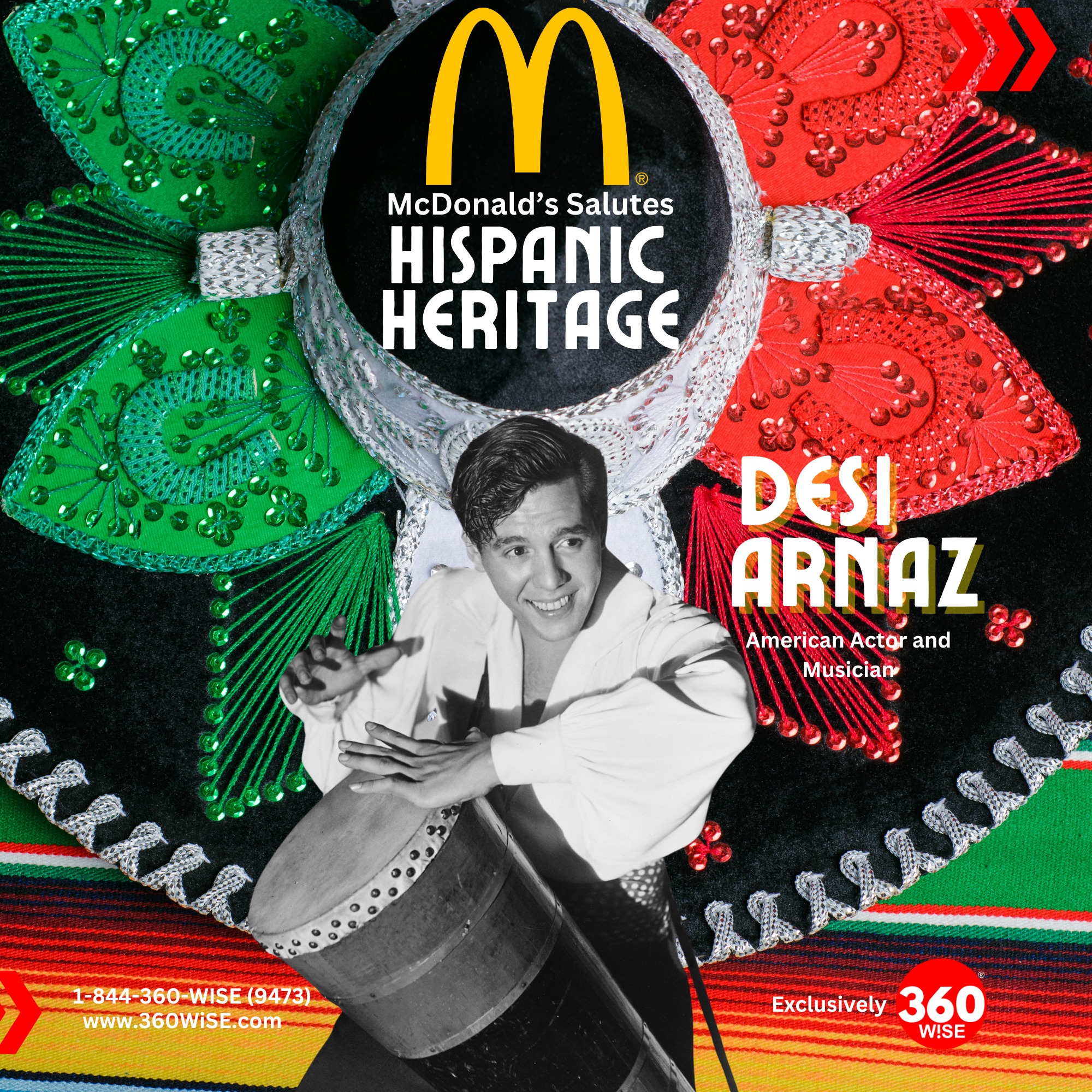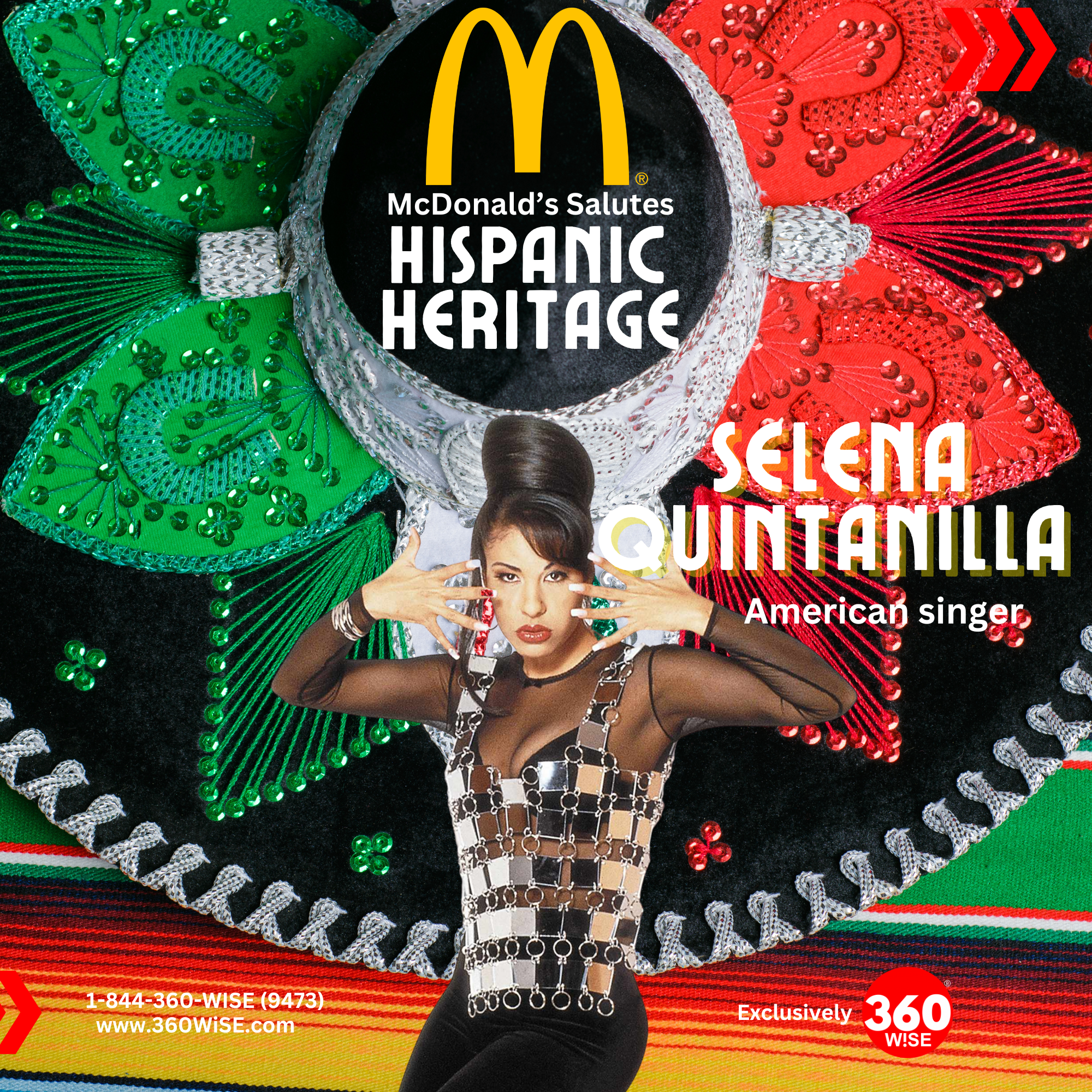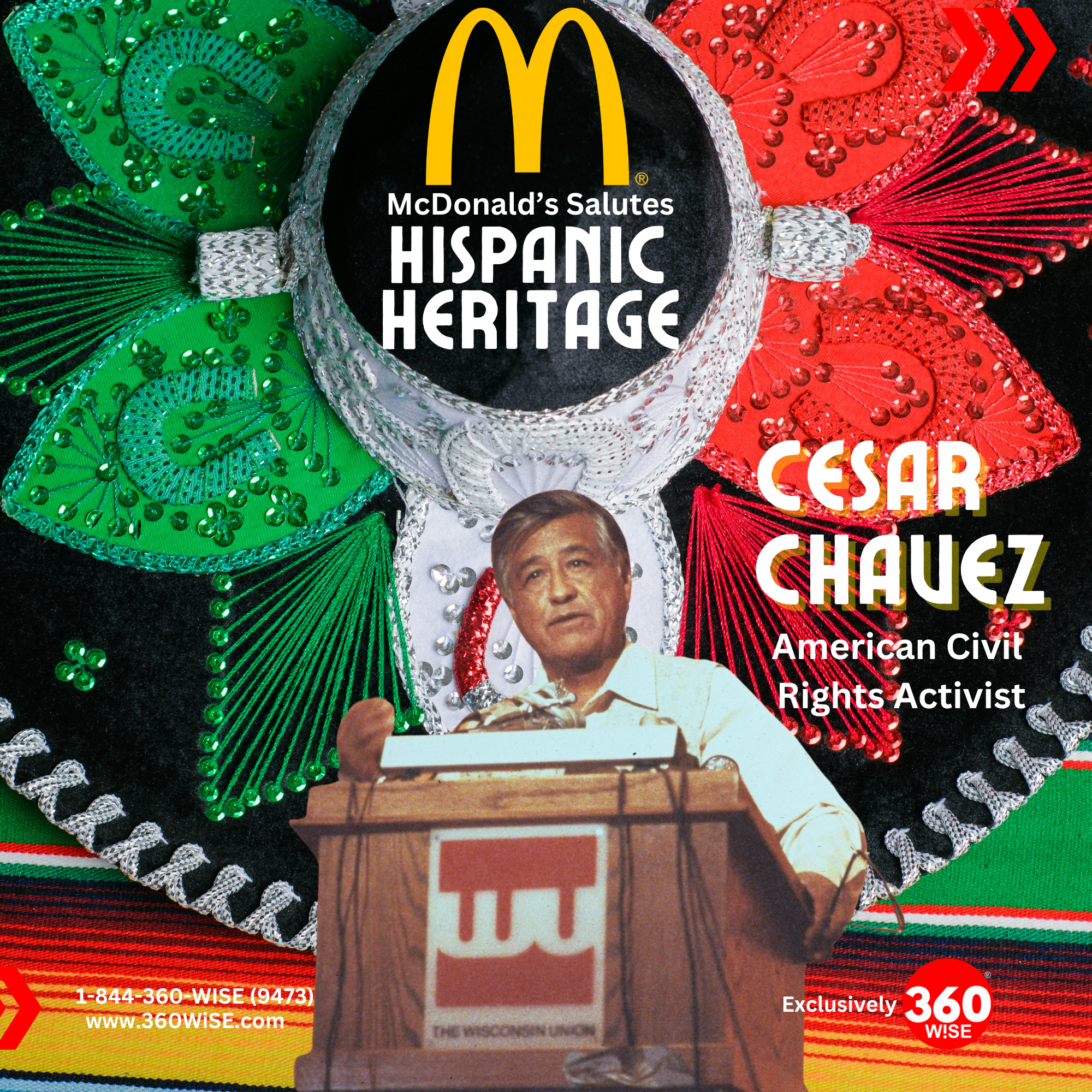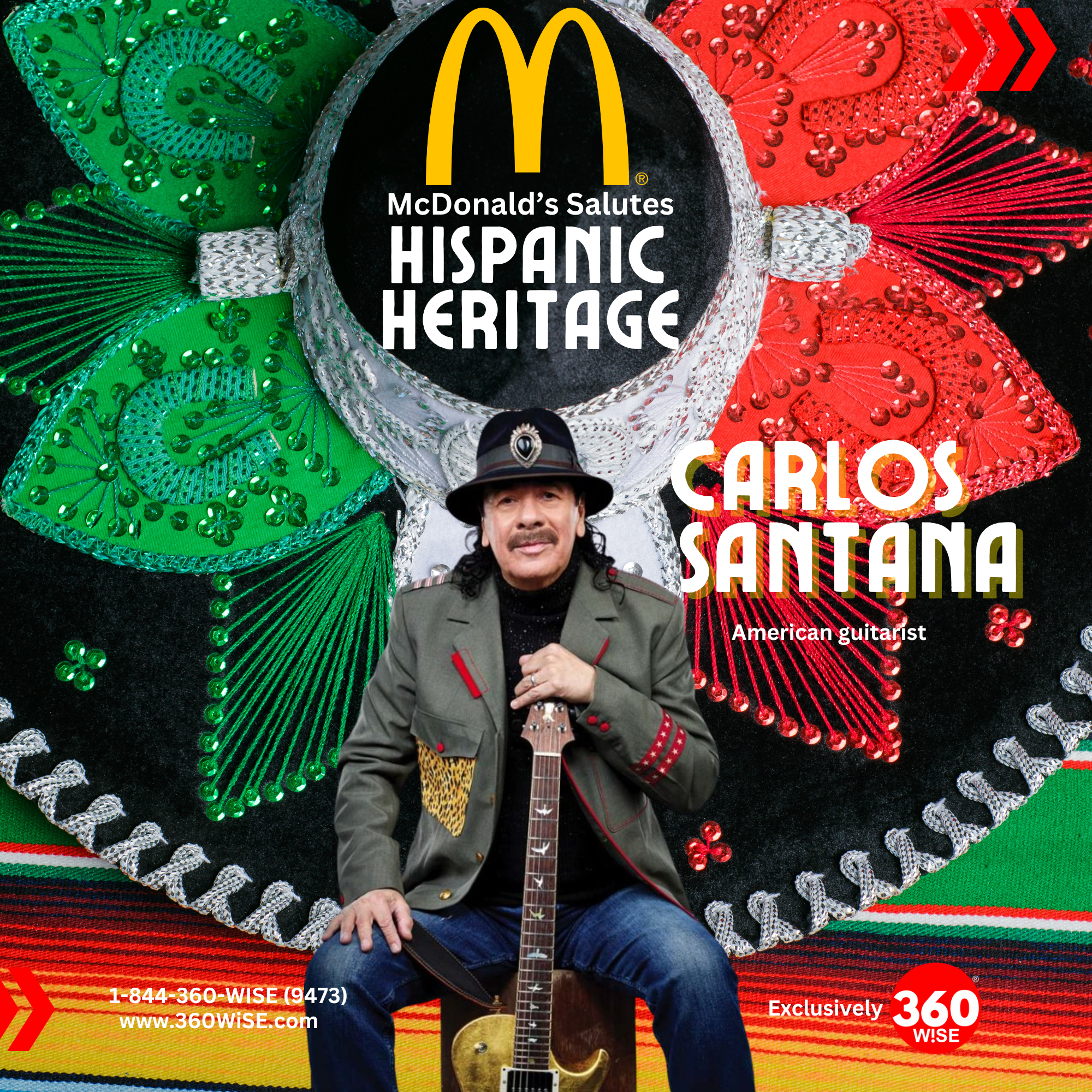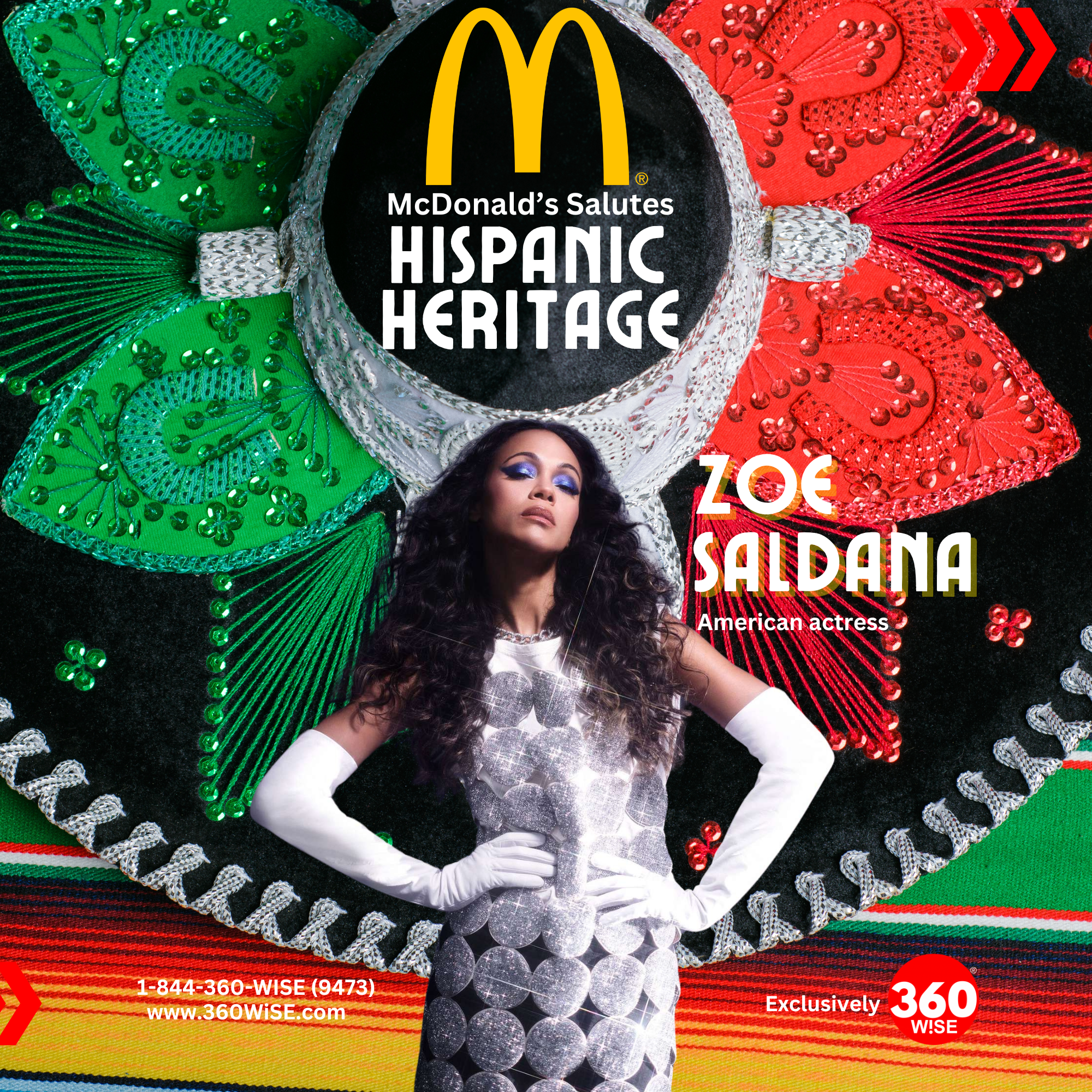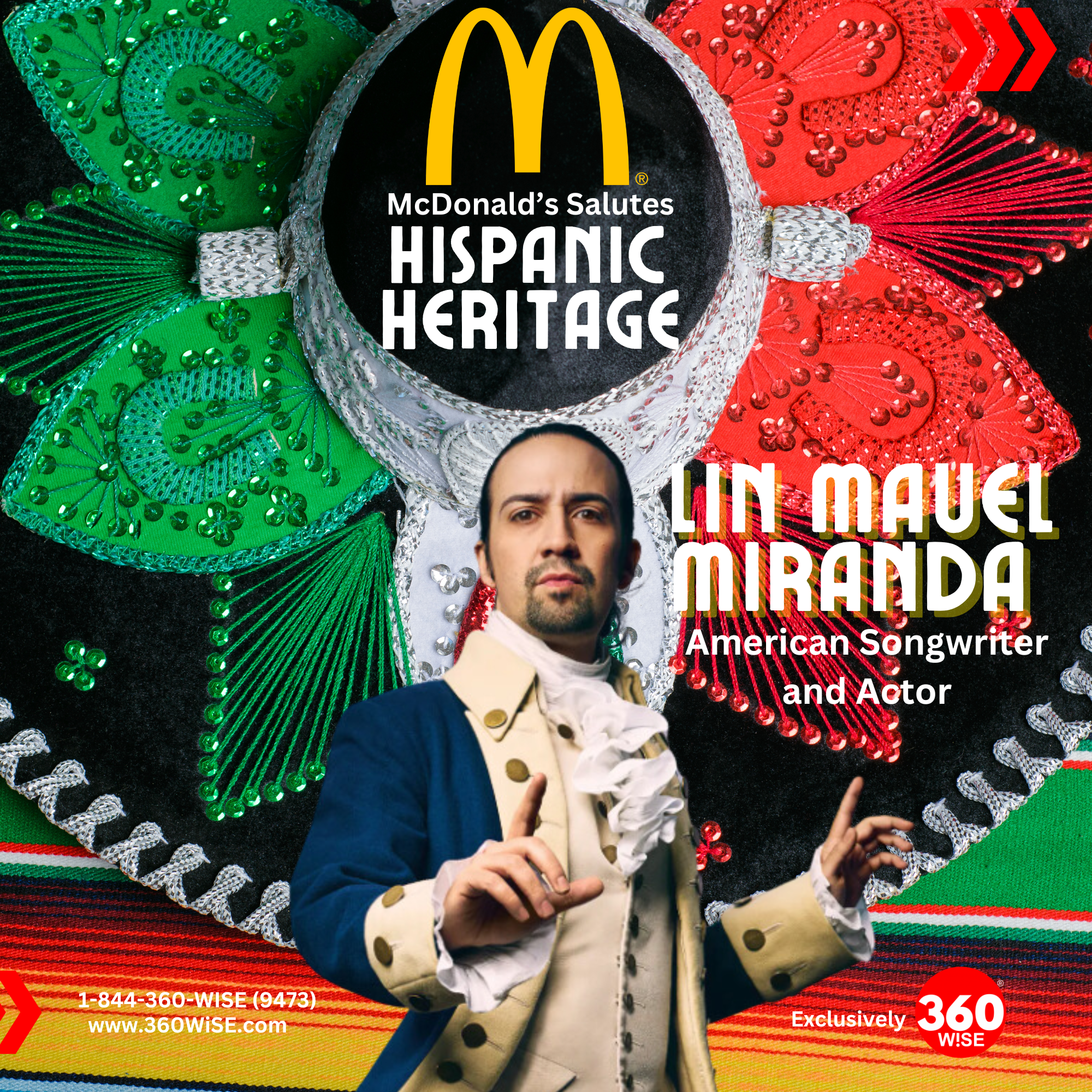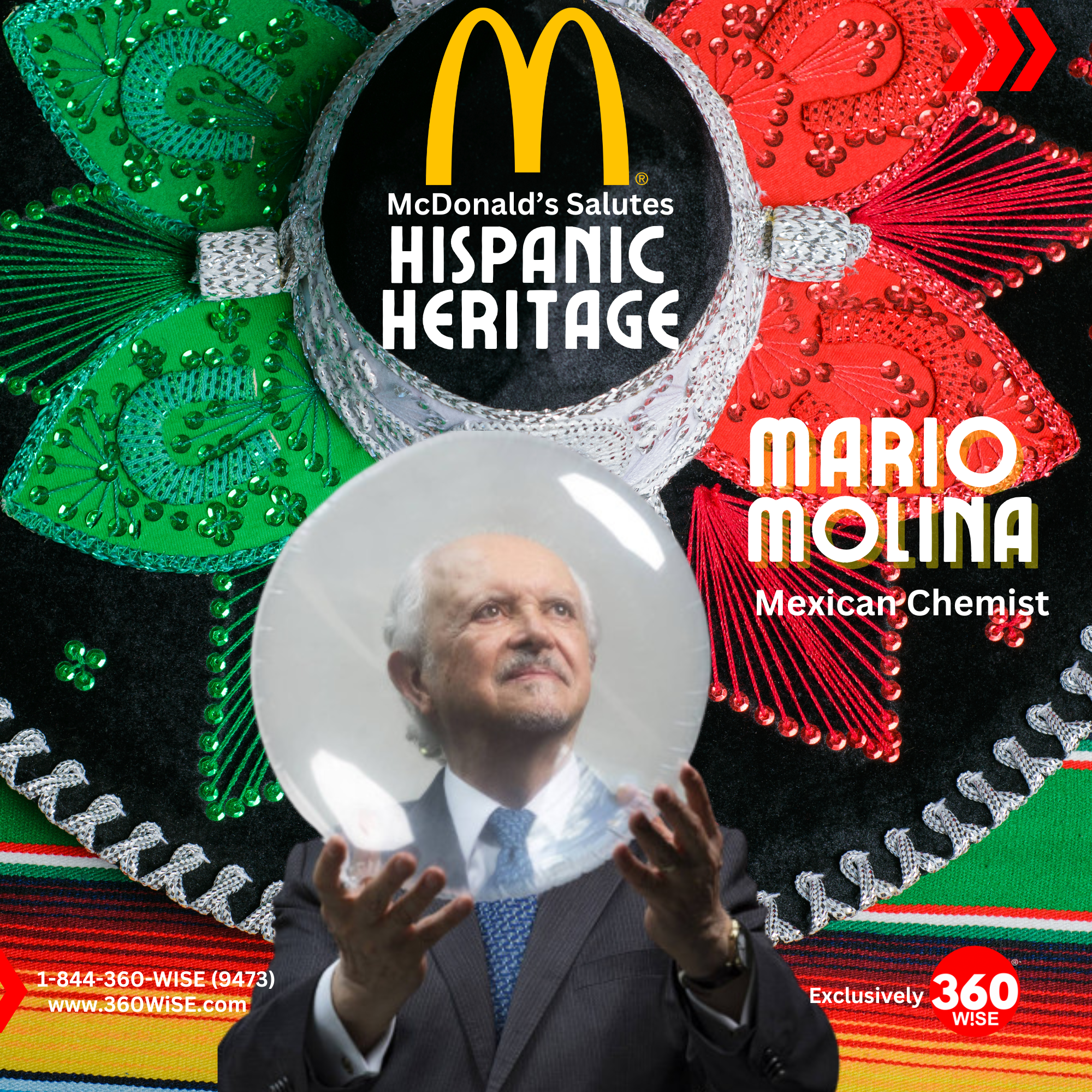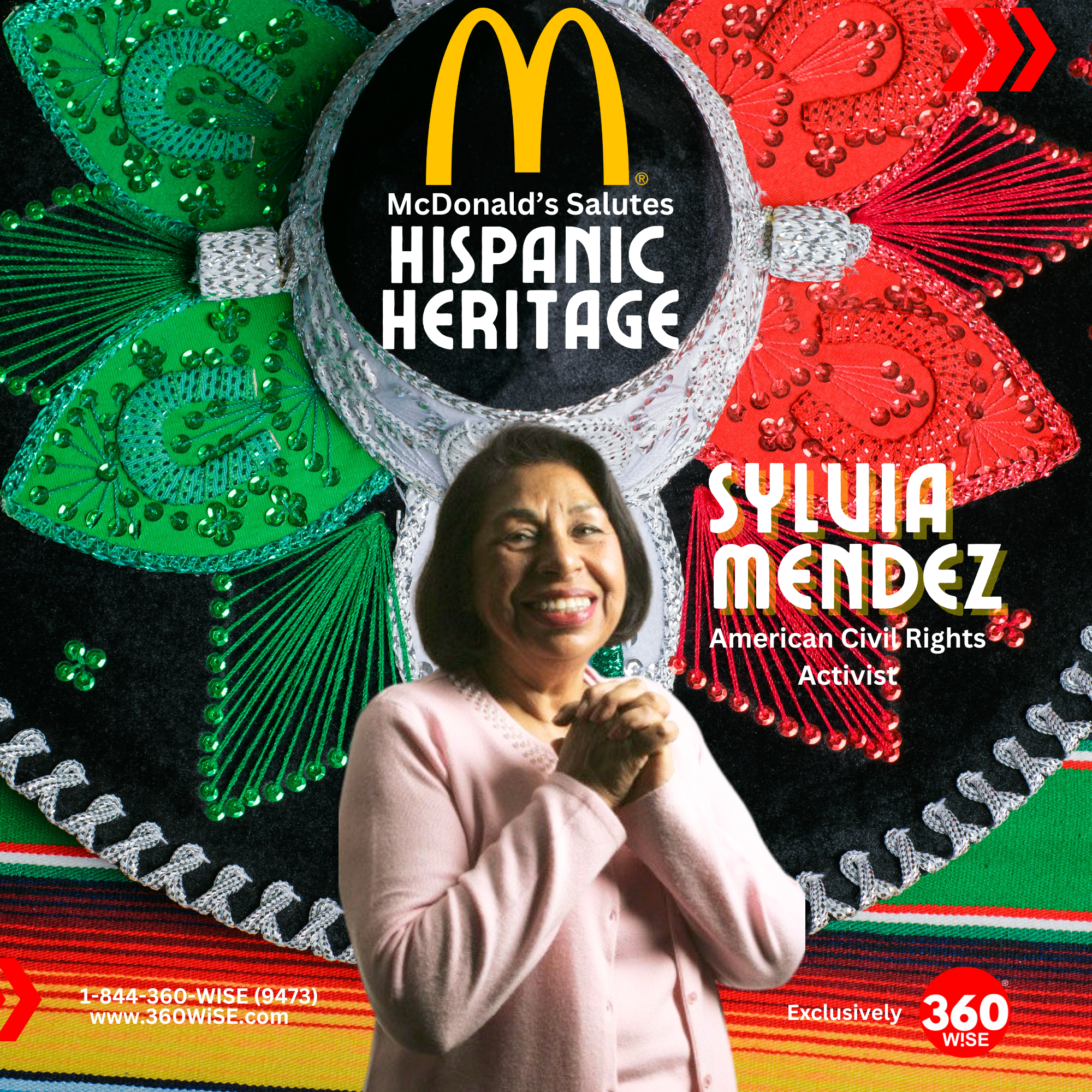 Salutes Hispanic History Back To McDonald's Salutes Hispanic History
Salutes Hispanic History Back To McDonald's Salutes Hispanic History
Tito Puente
Who is Tito Puente?
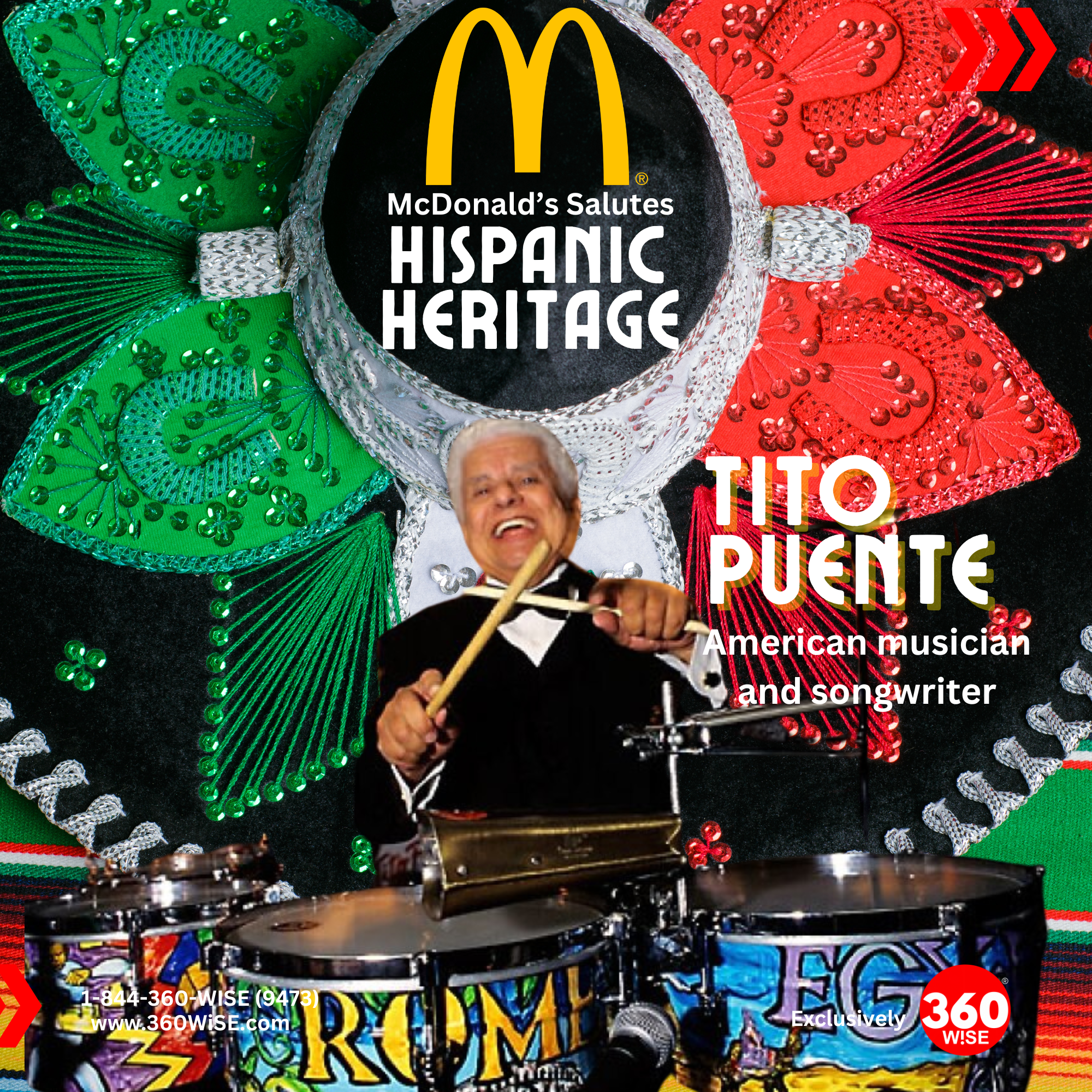
The Legendary Tito Puente
Tito Puente, often hailed as “The King of Latin Music,” was a musical virtuoso whose influence transcended genres and generations. Born on April 20, 1923, in New York City to Puerto Rican parents, Puente became a towering figure in the world of music, known for his dynamic performances, innovative compositions, and mastery of Latin rhythms. Over a career that spanned more than five decades, Puente played an instrumental role in popularizing Latin music in the United States and around the world. His contributions to mambo, cha-cha-cha, salsa, and Latin jazz have left an indelible mark on the music industry, making him one of the most celebrated and influential musicians of the 20th century. As we celebrate Hispanic Heritage Month, it is fitting to honor Tito Puente for his immense contributions to Latin music and culture.
Early Life: A Passion for Rhythm
Ernesto Antonio “Tito” Puente Jr. was born in Spanish Harlem, a vibrant neighborhood in New York City that was home to a large Puerto Rican community. From a young age, Puente showed a natural affinity for rhythm and music. He began taking piano lessons at the age of seven but soon switched to percussion, which would become his true calling. By the time he was a teenager, Puente was already performing with local bands, showcasing his exceptional talent as a drummer and percussionist.
Puente’s passion for music was nurtured by the rich cultural environment of Spanish Harlem, where he was exposed to a diverse array of musical styles, including jazz, Afro-Cuban rhythms, and traditional Puerto Rican music. This eclectic mix of influences would later play a crucial role in shaping Puente’s unique sound and style.
During World War II, Puente served in the United States Navy, where he played in the Navy band. After the war, he used his G.I. Bill benefits to study music at the Juilliard School, one of the most prestigious music conservatories in the world. At Juilliard, Puente honed his skills in orchestration, composition, and conducting, laying the foundation for his future success as a bandleader and composer.
The Rise of a Latin Music Icon
Tito Puente’s rise to fame began in the late 1940s and early 1950s, a period often referred to as the “Golden Age of Latin Music” in New York City. This era saw the emergence of mambo and cha-cha-cha, two dance styles that took the city by storm. Puente quickly became one of the leading figures in this musical movement, captivating audiences with his electrifying performances and innovative compositions.
In 1948, Puente formed his own band, the Tito Puente Orchestra, which quickly became one of the most popular Latin bands in the city. The orchestra’s performances at the Palladium Ballroom, a legendary dance hall in Manhattan, drew large crowds of both Latino and non-Latino audiences, helping to break down cultural barriers and introduce Latin music to a broader audience.
One of Puente’s earliest hits, “Abaniquito,” released in 1949, showcased his ability to blend traditional Latin rhythms with elements of jazz and swing. This fusion of styles would become a hallmark of Puente’s music, setting him apart from other bandleaders of the time. His mastery of the timbales, a type of drum used in Latin music, became one of his signature traits, earning him the nickname “El Rey de los Timbales” (The King of the Timbales).
Tito Puente’s Contributions to Mambo and Cha-Cha-Cha
The 1950s were a defining decade for Tito Puente as he solidified his status as a pioneer of mambo and cha-cha-cha. Mambo, with its energetic rhythms and infectious melodies, became the dominant dance craze of the time, and Puente was at the forefront of this musical revolution. His compositions, such as “Ran Kan Kan” and “Mambo Gozón,” became instant classics, helping to popularize mambo not only in the United States but also around the world.
In addition to mambo, Puente played a significant role in the development and popularization of cha-cha-cha, a dance style that originated in Cuba and quickly gained popularity in the United States. His hit song “Oye Como Va,” released in 1963, became one of the most iconic cha-cha-cha tracks of all time. The song’s catchy melody and rhythmic drive made it an instant favorite among dancers and music lovers alike.
“Oye Como Va” would later achieve even greater fame when it was covered by Carlos Santana in 1970. Santana’s rock-infused version of the song introduced Puente’s music to a new generation of listeners and cemented the song’s place in the pantheon of Latin music classics. Despite the success of Santana’s version, Puente was always quick to remind people that he was the original composer, famously stating, “Santana made me a lot of money with that song, but he never gave me credit. I’m the one who wrote it.”
Latin Jazz Innovator
Tito Puente’s contributions to music extended beyond mambo and cha-cha-cha; he was also a pioneering figure in the development of Latin jazz, a genre that blends Latin rhythms with the improvisational elements of jazz. Throughout his career, Puente collaborated with some of the most influential jazz musicians of his time, including Dizzy Gillespie, Miles Davis, and Thelonious Monk. These collaborations helped to bridge the gap between Latin music and jazz, creating a new and exciting sound that resonated with audiences around the world.
Puente’s albums, such as Puente in Percussion (1955) and Top Percussion (1957), showcased his innovative approach to Latin jazz, highlighting his skills as both a percussionist and a composer. These recordings featured complex rhythms, intricate arrangements, and virtuosic performances that pushed the boundaries of what Latin music could be.
In addition to his work as a performer, Puente was also a prolific composer and arranger, writing hundreds of compositions over the course of his career. His ability to blend different musical traditions into a cohesive and dynamic sound made him one of the most respected and influential musicians in the world of Latin jazz.
A Cultural Ambassador and Educator
Throughout his life, Tito Puente was more than just a musician; he was a cultural ambassador who dedicated himself to promoting and preserving Latin music and culture. He was a tireless advocate for music education, often giving lectures, conducting workshops, and mentoring young musicians. Puente believed in the importance of passing on the traditions of Latin music to future generations, and he worked to ensure that the rich cultural heritage of Latin America would continue to thrive.
In recognition of his contributions to music and culture, Puente received numerous awards and honors throughout his life. He was a five-time Grammy Award winner and received a Latin Grammy Lifetime Achievement Award in 2003. In addition to these accolades, Puente was honored with a star on the Hollywood Walk of Fame and was inducted into the International Latin Music Hall of Fame.
Puente’s legacy as a cultural icon was further cemented by his appearances in film and television. He made cameo appearances in movies such as The Mambo Kings (1992) and Calle 54 (2000), and he was a frequent guest on television shows, including The Cosby Show and Sesame Street. These appearances helped to bring Latin music to a wider audience and introduced Puente to new generations of fans.
The Enduring Legacy of Tito Puente
Tito Puente passed away on May 31, 2000, at the age of 77, but his music and legacy continue to live on. He left behind a vast body of work that has influenced countless musicians and continues to inspire new generations of artists. Puente’s ability to fuse different musical styles and his dedication to promoting Latin music have made him one of the most important figures in the history of music.
As we celebrate Hispanic Heritage Month, Tito Puente’s contributions to Latin music and culture remind us of the power of music to bring people together, transcend cultural boundaries, and create lasting legacies. His influence can be heard in the music of countless artists, from Latin jazz ensembles to contemporary pop stars, and his impact on the world of music is undeniable.
Puente’s music remains as vibrant and relevant today as it was during his lifetime. Songs like “Oye Como Va,” “Ran Kan Kan,” and “Mambo Gozón” continue to be celebrated and performed by musicians around the world. His recordings are studied and revered by music students and professionals alike, and his influence on the development of Latin music is still felt today.
Conclusion: Celebrating the King of Latin Music
Tito Puente was not just a musician; he was a trailblazer, a cultural ambassador, and a true icon of Latin music. His contributions to mambo, cha-cha-cha, and Latin jazz have left an indelible mark on the music world, and his influence continues to be felt across genres and generations. As we honor Tito Puente during Hispanic Heritage Month, we celebrate his incredible legacy and the enduring impact he has had on the world of music.
Puente’s life and career are a testament to the power of music to connect people, celebrate culture, and inspire creativity. His work has enriched the musical landscape and has brought joy and inspiration to millions of listeners around the world. Tito Puente will always be remembered as “The King of Latin Music,” a title that reflects not only his musical genius but also his dedication to sharing the beauty and richness of Latin culture with the world.
THE MOMENT
QUICK FACTS
Thank you to the New York Tristate Owner and Operators Association for your continued support.




